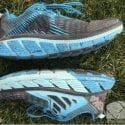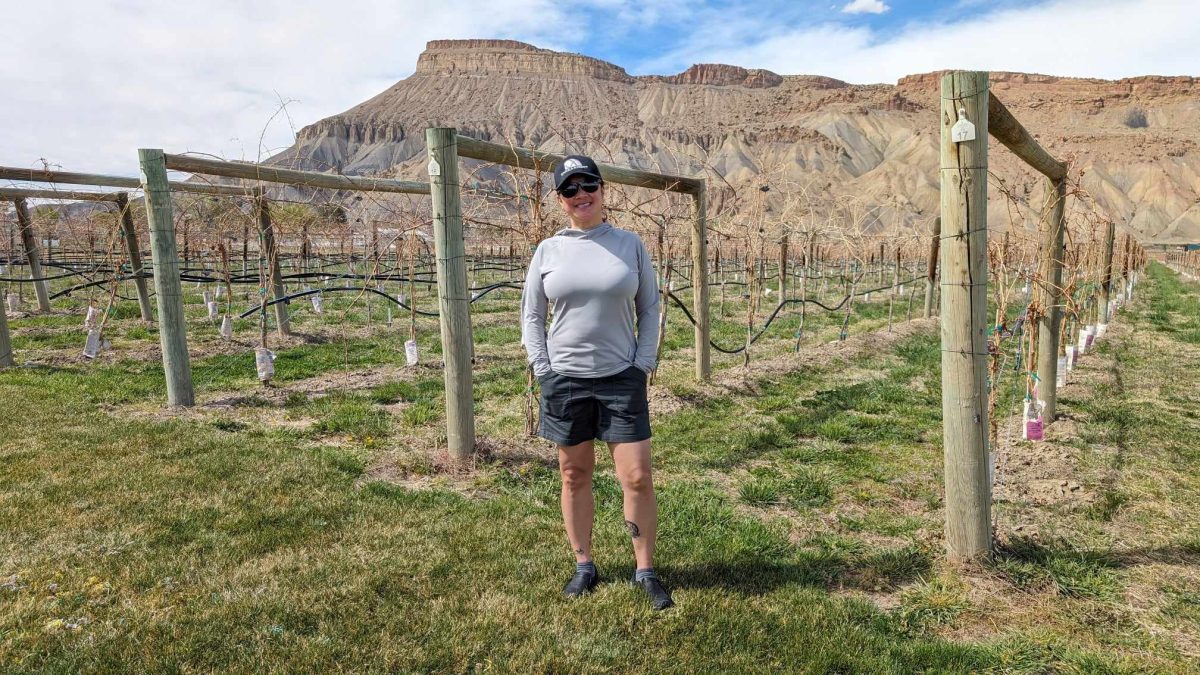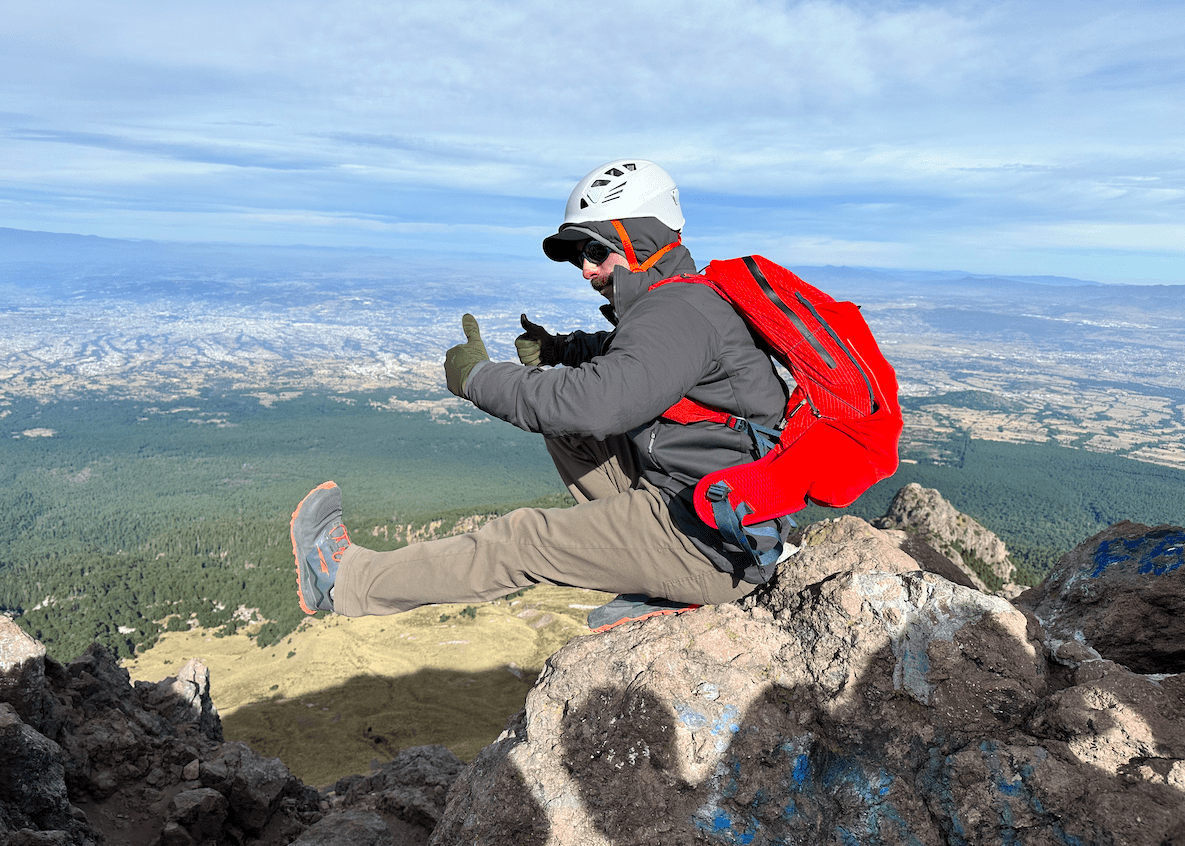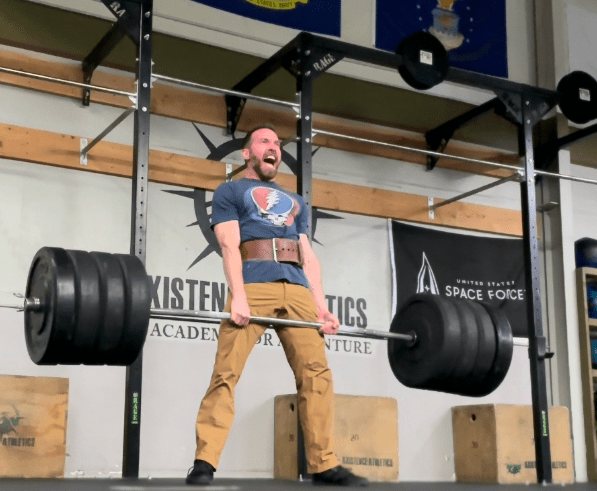Our review of these Hoka One One Gaviota shoes is written by guest contributor, Sarah Pizzo. It’s part of a two-part review of Hoka One One’s shoes. The first is the opinion of an experienced runner. The second will be from a novice who runs because sometimes he has to, but hates it the entire time. You can read more about Sarah in her bio at the end of the review.
I should preface this review by stating that I’ve been an elite-level distance runner for two decades. In that time, I’ve tried a lot of running shoes. I know what shoes work for me and I rarely stray from my go-to makes and models. It took a lot of convincing to get me to run in a pair of Hoka One One shoes. My attitude was: “I’m not old and I’m not fat, so I don’t need those over-cushioned clown shoes.”

Oh, how the Gaviotachanged my mind. I received my Gaviotas in the midst of a battle with plantar fasciitis. I was worried my injury would result in an early end to my running season and I was willing to try anything to make it go away. My physical therapist told me I needed a shoe with lots of cushioning AND lots of stability. Fortunately, Hoka’s website allows you to view each model’s cushioning and stability levels – as well as weight and heel-toe drop – by hovering your cursor over the photo of each shoe. This made it easy for me to choose the shoe with a combination of the highest level of stability and mid-level cushioning. As a side note, it would be nice to see Hoka add a feature to their website whereby one can sort models by cushioning and/or stability level.
I loved the initial feel and fit of the Gaviota. I joke that running in Hokas is like running on a cloud. But seriously, those were the first words out of my mouth when I tried on my Gaviotas. The heel held my relatively narrow foot perfectly and the toebox was wide enough to allow my toes to spread out comfortably. Unlike most shoes, I did not have to cinch the laces so tight that the two sides of the upper came into contact. As an added bonus: when I pulled these out of the box they weren’t nearly the crazy clown-shoes I was expecting…they almost look normal!
I officially fell in love with my Gaviotas – and every element of the Hoka One One technology – on my first test run. Hoka says that every feature of this shoe is designed to provide the best lightweight support, and I believe it. The cushioning made for a super comfortable ride without making the shoe too stiff or unresponsive. Hoka’s “Late Stage Meta-Rocker Geometry” kept its promise of a smooth heel-to-toe transition and slight forward propulsion. Based on the wear pattern on the outsoles of these shoes, I’m landing more on my midfoot, unlike most of my other shoes, which show that I’m a heel-striker. (Most sciences say midfoot landing is better). Finally, the Gaviota uses Hoka’s new J-Frame technology, which slows pronation. Like the majority of humans, I tend to overpronate, especially when my legs are tired (hence my battle with plantar fasciitis and countless other pronation-related injuries throughout my career). My plantar issues cleared up within a couple of weeks, so I think the Gaviota fixed that problem. If you are having plantar or other foot issues, I think this is the best shoe for you.
True to the Engearment policy, I’ve put my Gaviotas through the ringer while training for my first 50-mile race. I’ve covered roughly 300 miles in these shoes over all types of terrain, speed, and distance, from short sprints on the track to marathon-distance trail runs. I find these shoes are best suited for easy road runs and long runs. These are the runs that make me appreciate the incredible Hoka cushioning. Even someone like me, who is relatively young and lightweight, can benefit from the joint-saving benefits of Hoka’s signature “maximalist” cushioning.
Despite the fact that Hoka places these shoes in the “road” category, they have excelled on the technical mountain trails where I do most of my running. The tread provides reliable traction on all surfaces –wet and dry – and the thick underfoot cushioning provides protection from sharp rocks. Contrary to my expectations, I did not feel too high off the ground nor prone to ankle-rolling on technical trails. The wide base of the sole and the “Active Foot Frame” technology makes my foot plant super stable on even the gnarliest of trails. And despite the fact that the Gaviota is one of Hoka’s heavier models at 8.6 ounces per shoe, it’s no heavier than my other stability shoes and it feels significantly lighter than one would expect, considering its size and cushioning.
My only complaint about the Gaviota is a seemingly-insignificant feature of the insole: a one-centimeter long jagged edge near the medial side of the big toe. This edge caused a deep and painful blister on one of my big toes during a trail marathon race. Granted, this was partly a result of moving quickly through turns and over uneven ground. But the blister became aggravated every time I wore these shoes after the race. Other reviewers have reported a similar problem. I solved the problem by trimming the jagged edge from my left insole.
My experience with the Gaviota has converted me from a Hoka skeptic to a Hoka fan. In fact, the Gaviota has quickly become the favorite in my quiver of 4-5 shoes. I’m planning to buy another pair to carry me through my first 50-mile race.
Sarah grew up in the foothills west of Denver, Colorado, surrounded by open space and views of 14,000-foot peaks. As soon as she could walk, her parents strapped skis on her feet in the winter and took her on backpacking and rafting adventures in the summer. She ran her first race at age 11 and fell in love with the sport, going on to win high school state championships in cross country and track and earn a scholarship to run for one of the top Division I college running programs in the country. After college, Sarah moved back to Colorado and became an accomplished mountain runner, winning the 2016 U.S. Skyrunning Series. When she’s not exploring the wilderness by foot, bike or raft, she practices law in her hometown.
See also –






Leave a Reply